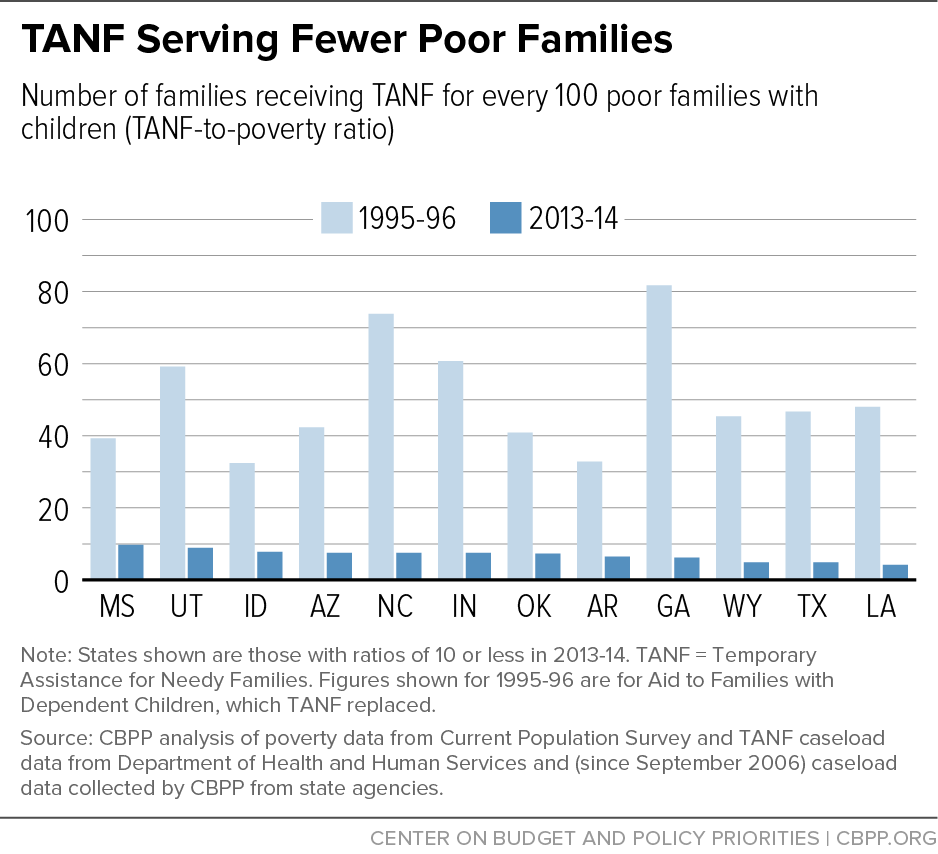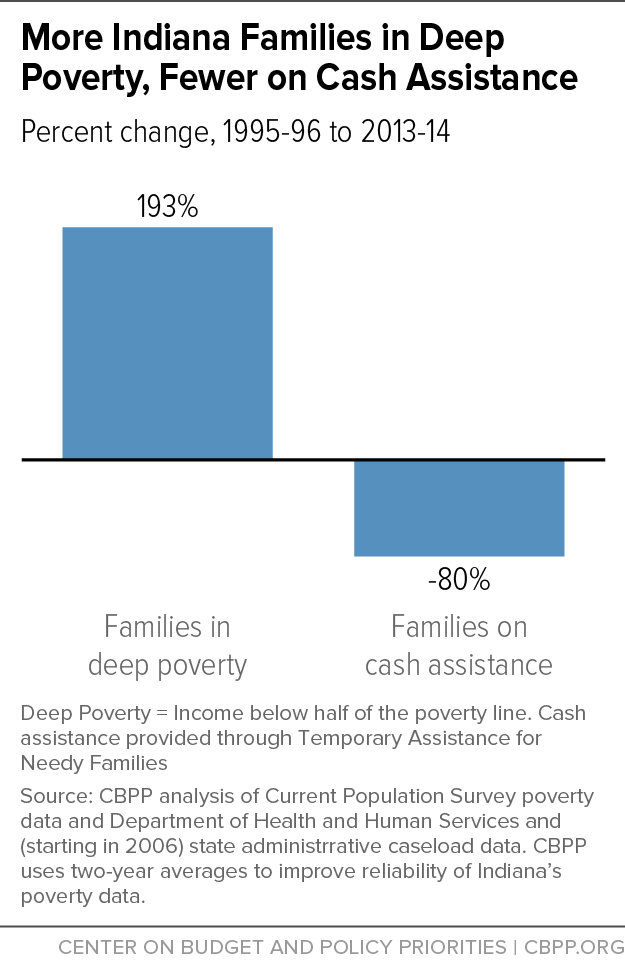BEYOND THE NUMBERS
As we approach the 20th anniversary of the Temporary Assistance for Needy Families (TANF) block grant on August 22, this blog series will outline key facts about the program.
TANF provides cash assistance to a shrinking number of poor families, even though the need remains high.
Nationwide, for every 100 poor families, just 23 families received TANF cash assistance in 2014. That’s down from 68 such families that received cash assistance under Aid to Families with Dependent Children (AFDC) in 1996 — the year that President Clinton and Congress created TANF to replace it.
But that figure tells only part of the story. The TANF-to-poverty ratio — the number of families receiving TANF for every 100 poor families with children — varies widely among states, ranging from 4 in Louisiana to 78 in Vermont. In 12 states, the ratio is 10 or less (see first graph). In 1996, no state had such a ratio that low.
Using their broad flexibility under the TANF block grant, states have made decisions about TANF policies, procedures, and spending that have substantially weakened the program as a safety net — even as the number of families in deep poverty, with incomes below half the poverty line, has risen.
Indiana provides a striking example. The average number of families receiving cash assistance each month fell by 80 percent between 1995-96 and 2013-14, from 56,000 to just 11,000 (see second graph). Over the same period, the number of families with cash incomes below half of the official poverty line almost tripled, from 25,000 to 73,000.
Indiana limits the time that parents can receive TANF to 24 months, and it requires applicants to meet onerous work requirements. The monthly cash grant of just $288 for a family of three hasn’t changed in 20 years, giving this family cash income equal to just 17 percent of the poverty line.
The 1996 welfare law greatly expanded states’ control over welfare policy on the theory that they could better address the needs of poor families. Instead, state policy choices have helped fuel an increase in deep poverty and left the vast majority of the poorest families to fend for themselves.


